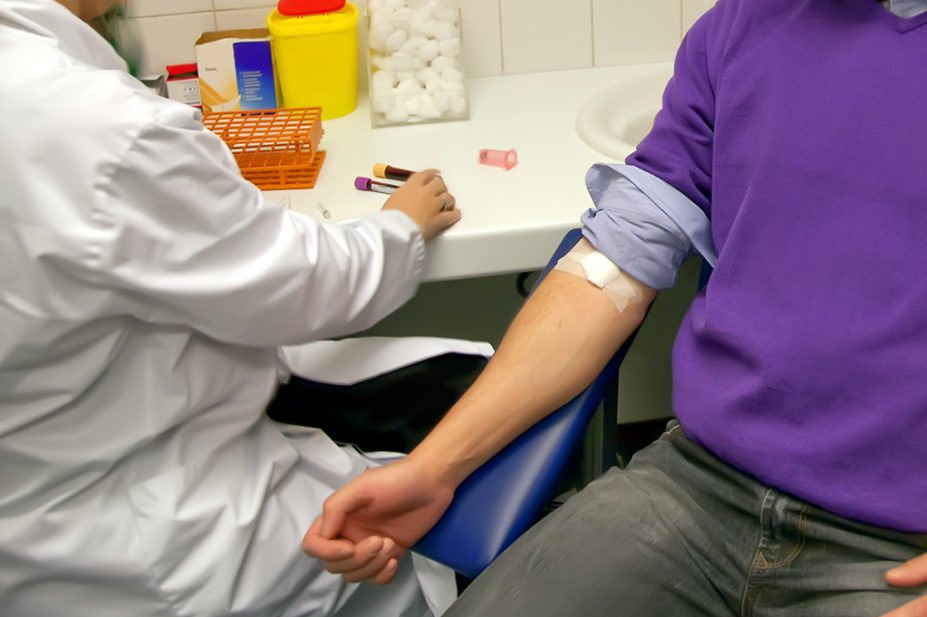
Shutterstock.com
Researchers have said a blood test could be used to predict and monitor response to chemotherapy in prostate cancer.
In a study presented at the National Cancer Research Institute Cancer Conference 2021 on 9 November 2021, researchers investigated whether circulating tumour cells (CTCs) — cancer cells that have detached from the tumour and entered the bloodstream — could be used as a tool for predicting and/or monitoring responses to docetaxel, a chemotherapy medicine.
The researchers took samples from 56 patients with advanced prostate cancer who were being treated at St Bart’s Hospital, London. The samples were taken before treatment, after the first dose of docetaxel chemotherapy, before their fifth dose and once after they had finished treatment — a period of around six to eight months.
A total of 205 samples were taken for analysis and a blood filtration system was used to identify CTCs and capture different CTC subtypes.
Analysis revealed a significant inverse correlation of CTC parameters with overall survival and progression-free survival — men were less likely to respond to docetaxel, their disease was more likely to recur or progress within three months, and they were more likely to die within 18 months if there were more than six CTCs present per 7.5mL of blood detected before their first docetaxel dose. This was compared to progression-free survival of 17 months and an overall survival time of three years for men with fewer than six CTCs detected per 7.5mL of blood.
The analysis also showed that having more than one type of ‘classic’ CTC — such as epithelial or cytokeratin positive cells — before the beginning of treatment was a predictor of whether the disease would progress within two months following treatment, instead of more than a year later.
High numbers of CTCs towards the end of treatment also appeared to predict a shorter time to disease progression and death.
Caitlin Davies, a PhD research student at Barts Cancer Institute, Queen Mary University of London, who presented the study, said: “Our ability to collect and analyse CTCs before, during and after treatment meant that we could monitor changes in CTCs in response to treatment.
“We then looked for patterns in the data from men who responded or did not, or whose disease progressed sooner than others after treatment.”
Davies said that it would be possible to apply these patterns to future patients with the goal to predict whether they will respond to therapy and pre-emptively decide on the best course of action that will have maximal benefit.
“For instance, an increase in CTC numbers may indicate a lack of response to treatment. Furthermore, by monitoring the appearance of potentially drug-resistant CTCs, we can change treatment tactics early on and in a patient-personalised and timely manner,” she said.
Matthew Hobbs, director of Research at Prostate Cancer UK, said finding new ways to predict and monitor men’s response to treatment was an “important” area of research that could improve outcomes for men with advanced prostate cancer.
“Although this research is still at an early stage, it helps us understand how and when liquid biopsies might be used to personalise treatment for men and give them the best chance of a good outcome. We’re proud to be funding several studies, including a large-scale clinical trial, to explore the potential of different types of liquid biopsy and the difference they could make to men’s lives.”
Diana Matthews, an advanced oncology pharmacist, said that the existing prostate-specific antigen (PSA) test was a “very good indicator” of disease progression and treatment efficacy.
“For example, a patient with a presentation PSA of 800 and a Gleason Score of 9 will very likely do less well than a patient with PSA 20 and Gleason Score 6.”
However, she added that CTC sampling would be more useful for cancers that do not have tumour markers, such as sarcoma.
Read more: Prostate cancer: recognition and diagnosis


